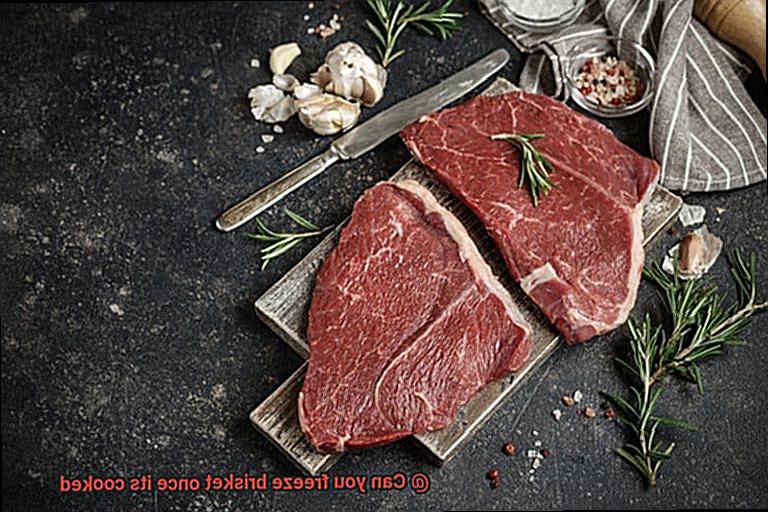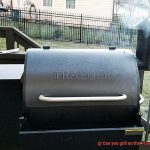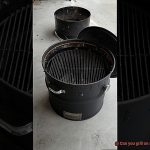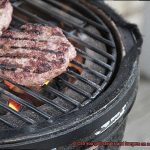Imagine this: You’ve conquered the kitchen, taming the mighty brisket into a mouthwatering masterpiece. Each bite is a symphony of flavors that leaves you craving more. But what happens when you find yourself with an abundance of brisket? Fear not, my friend. I’m here to spill the beans on a little-known secret: you can freeze your cooked brisket without sacrificing its incredible taste and texture.
In this post, we’ll dive deep into the world of freezing cooked brisket. We’ll uncover the step-by-step process, explore the benefits and potential drawbacks, and arm you with knowledge that will level up your leftover game. Whether you’re a culinary novice or a seasoned barbecue pro, get ready for some freezer-friendly wisdom that will change the way you handle those precious leftovers.
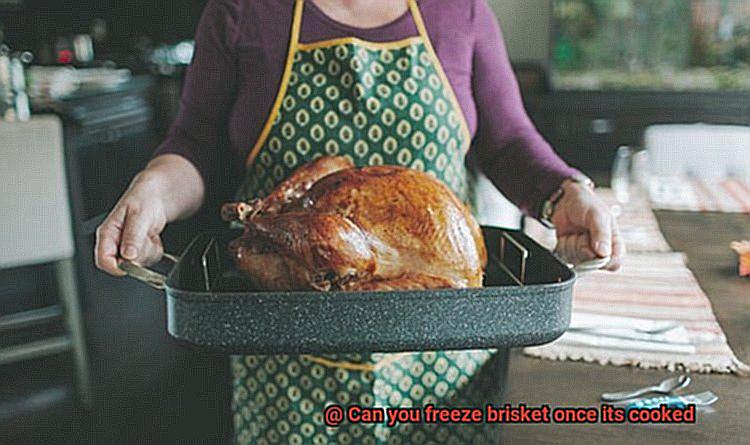
So, if you’ve ever pondered the question, “Can you freeze brisket once it’s cooked?” – keep reading and unlock the magic of preserving brisket perfection for future feasts.
Contents
Benefits of Freezing Cooked Brisket
The solution lies in the freezer. In this article, we will delve into the numerous benefits of freezing cooked brisket, from extending its shelf life to exploring a world of flavor possibilities.
Extended Shelf Life:
Freezing cooked brisket is a remarkable way to prevent spoilage and extend its shelf life. By properly storing it in the freezer, you can relish the delectable taste of brisket for up to three months. This benefit is particularly valuable when you’ve prepared a generous batch or have leftovers from a special occasion.
Convenient Meal Prep:
Imagine having a delectable meal at your fingertips whenever your craving strikes. Freezing cooked brisket allows for convenient meal prep, as you can store it in individual portions or slices. When hunger strikes, simply thaw and reheat the desired amount, eliminating the need for extensive cooking or preparation.
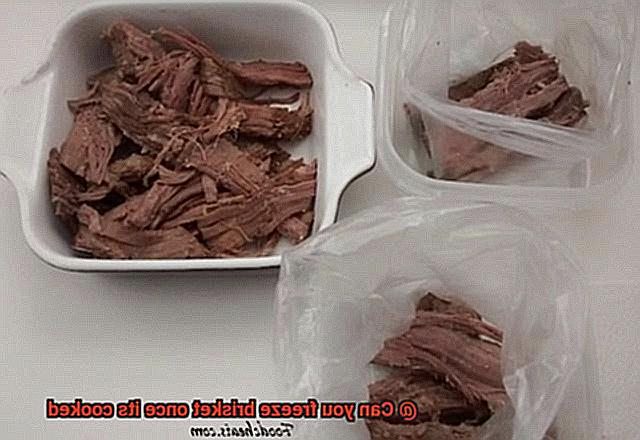
Time-Saving Option:
In our fast-paced lives, finding time to prepare a full meal every day isn’t always feasible. By freezing cooked brisket, you can reclaim precious time by having pre-cooked portions readily available. Thawing and reheating the frozen brisket is all it takes to savor a mouthwatering meal without sacrificing taste or quality.
Preserves Flavor and Texture:
Concerns about losing flavor and texture when freezing cooked meat are valid, but with proper wrapping and storage techniques, freezing cooked brisket retains its juiciness, tenderness, and flavor. Whether you’re reheating it for a quick weeknight dinner or serving it at your next gathering, your brisket will taste just as scrumptious as the day it was cooked.
Cost-Effective Measure:
Freezing cooked brisket is a cost-effective measure that allows you to make the most out of your purchase or leftovers. Buying brisket in bulk or having leftovers from a special occasion can be put to good use by portioning and freezing it. This not only aids with better portion control but also reduces food waste.
Versatility in Flavor Profiles:
Craving a different flavor profile for your brisket? Freezing cooked brisket provides the flexibility to experiment with various marinades, sauces, and spices. Marinate the brisket before cooking, freeze it once done, and then add different flavors during reheating. The result? A versatile dish that can be transformed into unique and diverse meals.
How to Properly Freeze Cooked Brisket
Brisket is a mouthwatering cut of meat that is often slow-cooked to perfection. But what do you do when you have leftovers or want to prepare ahead for future meals? Freezing cooked brisket is the answer. However, it’s important to freeze it properly to maintain its flavor and texture. In this article, we’ll guide you through the steps to freeze cooked brisket like a pro.
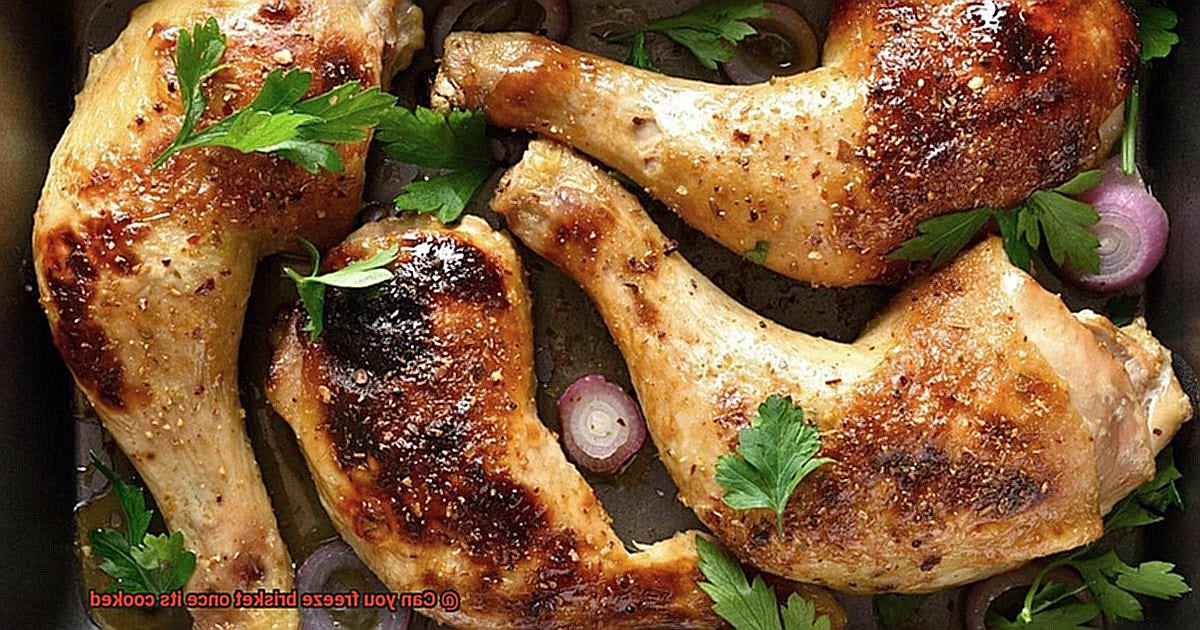
Step 1: Let it cool completely
Before freezing cooked brisket, make sure it has cooled down completely. This allows the meat to set and prevents any moisture from accumulating during the freezing process. You want your brisket to stay tender and juicy, right?
Step 2: Slice or shred into portions
Once your brisket has cooled, it’s time to slice or shred it into individual portions. This makes it easier to thaw and reheat later on. Imagine having perfectly portioned slices of brisket ready to go whenever you’re craving a tasty meal.
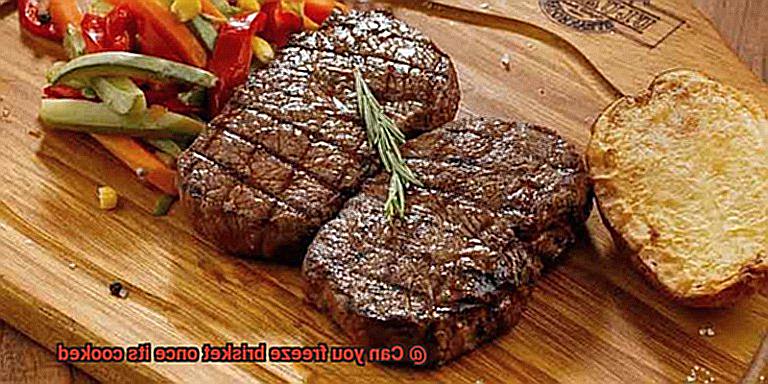
Step 3: Wrap it up tight
To prevent freezer burn and keep your brisket fresh, wrap each portion tightly in plastic wrap or aluminum foil. This will seal in the flavors and protect it from any unwanted ice crystals that can ruin its texture. We want every bite of your brisket to be as delicious as the first.
Step 4: Double protection
For an extra layer of protection against freezer burn, place your wrapped portions inside resealable freezer bags or airtight containers. Remove as much air as possible before sealing them shut. This will help maintain the quality of your brisket for longer periods.
Step 5: Label and date
Don’t forget to label each package with the date of freezing. This way, you can keep track of its freshness and know when it’s time to enjoy your frozen cooked brisket. You can even include specific instructions for reheating or serving, so you’ll never forget how to make it taste its best.
Step 6: Store it right
When storing your wrapped brisket in the freezer, find a spot where it will freeze quickly and remain at a constant temperature. The back of the freezer is usually the coldest spot, so that’s the perfect place for your precious brisket. Avoid overcrowding the freezer to ensure proper airflow and even freezing.
Recommended Storage Times for Frozen Brisket
Before you go freezing your prized meat, let’s dive into the details of recommended storage times for frozen brisket.
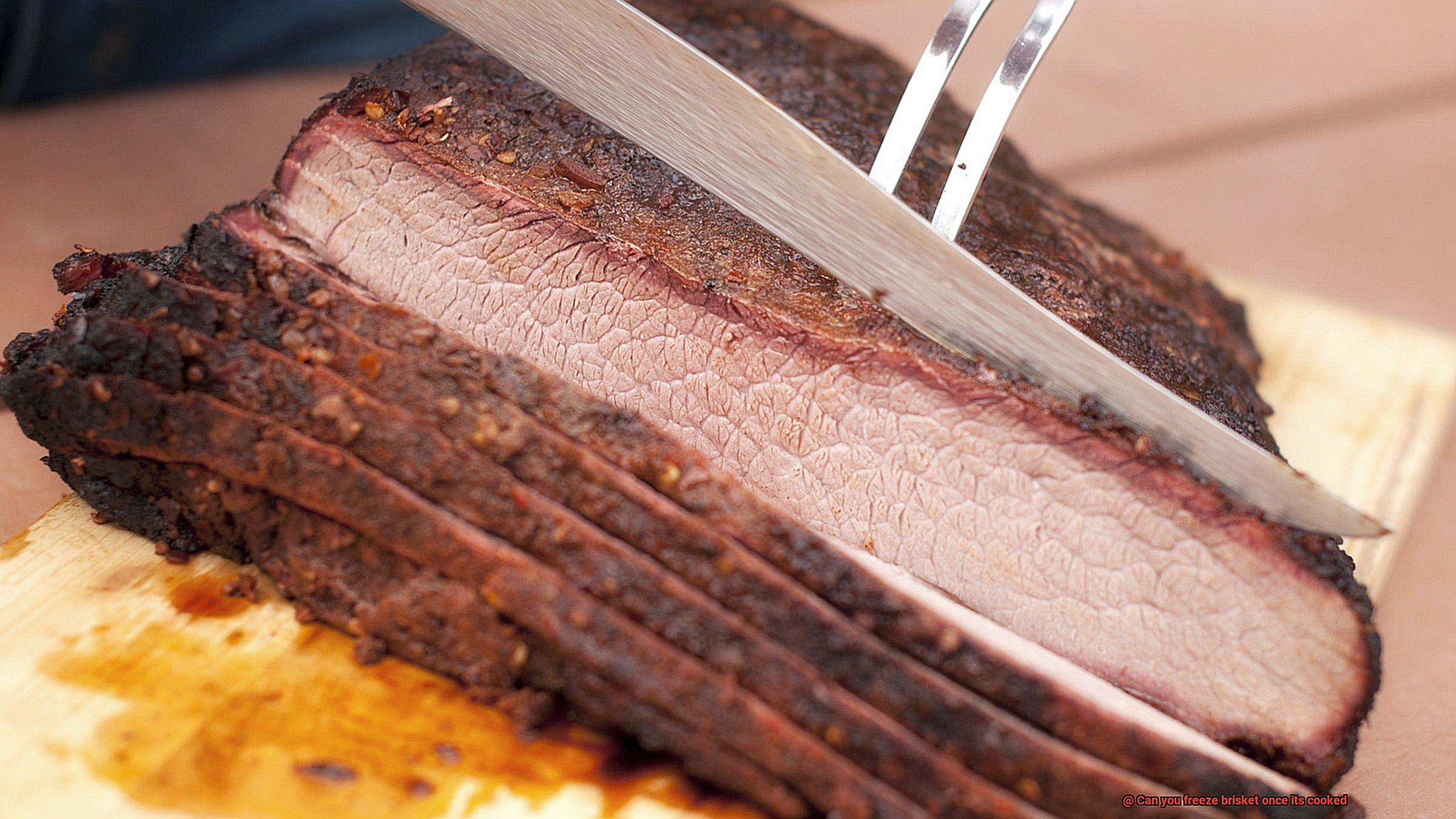
When it comes to freezing cooked brisket, the general rule of thumb is to consume it within 2 to 3 months. While frozen food can technically be safe indefinitely, its quality and taste may start to decline after this timeframe. So, to enjoy the best-tasting brisket possible, it’s best to stick within this window.
Now, let’s talk about packaging. Proper packaging is key to preserving the moisture and quality of your frozen brisket. One popular method is vacuum sealing. This removes all the air from the package, preventing freezer burn and maintaining that delicious juiciness. If you don’t have a vacuum sealer, fear not. Airtight containers or heavy-duty freezer bags will do the trick as well.
To make your life easier when it comes time to eat your frozen brisket, consider dividing it into smaller portions before freezing. This not only allows for quicker thawing but also reduces the risk of waste if you only need a portion at a time. Just remember to label each package with the date of freezing, so you know exactly how long it’s been stored.
When it’s time to thaw your frozen brisket, patience is key. The best method is to thaw it in the refrigerator overnight. This slow and steady process ensures even thawing without compromising the texture or flavor of your meat. If you’re short on time, you can use the defrost setting on your microwave, but be sure to monitor it closely to avoid any cooking.
Once your brisket is thawed, it’s crucial to reheat it thoroughly to eliminate any potential bacteria growth. Whether you choose to heat it up on the grill, in the oven, or even on the stove, make sure it reaches an internal temperature of at least 165°F to ensure food safety.
Now that we’ve covered the recommended storage times and proper handling of frozen brisket, let’s recap the key points:
- Recommended storage time: Consume frozen brisket within 2 to 3 months for optimal taste and quality.
- Packaging: Vacuum sealing is ideal for preventing freezer burn, but airtight containers or heavy-duty freezer bags will also work.
- Portioning: Divide the cooked brisket into smaller portions before freezing for easier thawing and minimal waste.
- Labeling: Remember to label each package with the date of freezing for easy tracking of storage time.
- Thawing: Thaw frozen brisket in the refrigerator overnight or use the defrost setting on your microwave if time is limited.
Tips for Wrapping and Labeling Frozen Brisket
Freezing cooked brisket is a fantastic solution. However, proper wrapping and labeling are key to maintaining its flavor and quality. In this article, we will explore essential tips to help you wrap and label your frozen brisket effectively. Get ready to impress your friends and family with mouthwatering grilled brisket any time you want.
Choose the Right Materials:
To keep your brisket fresh and prevent freezer burn, opt for high-quality freezer-safe materials. Heavy-duty aluminum foil, plastic wrap, or freezer bags are excellent options. These materials provide a protective barrier against moisture loss and air exposure, preserving the juiciness and tenderness of the meat.
Double-Wrap for Extra Protection:
Double-wrapping your brisket provides an additional layer of insulation and prevents leakage during freezing. Wrap it tightly in plastic wrap or aluminum foil, then add another layer of protection. This double-layered armor shields the brisket from the icy elements of the freezer, ensuring it remains intact and succulent.
Remove Excess Air:
Minimize air exposure by squeezing out excess air from plastic bags or tightly folding the foil around the brisket. Air is the enemy when it comes to frozen meat, as it can lead to freezer burn and degrade the taste and texture of the brisket. Eliminating excess air ensures that your frozen treasure stays pristine and ready for grilling.
Label with Important Information:
Properly labeling your frozen brisket is crucial for easy identification and storage. Use a permanent marker or labels to note the date of freezing, cut of meat, and any additional seasonings or marinades used. This information allows you to keep track of your inventory, ensuring that you can select the perfect piece of brisket for your next grilling adventure.
Portion Appropriately:
If you have a large brisket, divide it into smaller portions before freezing. This allows you to thaw only what you need without defrosting the whole piece. Not only does this save you time and energy, but it also helps preserve the quality of the remaining brisket. Ensure each portion is well-sealed to avoid cross-contamination or freezer odors.
Vacuum Sealing for Maximum Freshness
Vacuum sealing is a game-changer when it comes to preserving the freshness of food, and it’s particularly effective for cooked brisket. This method creates an airtight seal around the brisket, eliminating the risk of freezer burn and ensuring maximum flavor and tenderness.
Freezer burn, that dreaded enemy of frozen foods, is no match for vacuum sealing. Say goodbye to those dry, discolored patches that ruin the texture and taste of your meat. By removing all the air from the packaging, vacuum sealing creates a protective barrier that seals in the moisture and prevents any air from sneaking in and wreaking havoc on your beloved brisket. So when you finally thaw and reheat it, you’ll be greeted with a moist, succulent piece of meat that tastes just as amazing as the day you grilled it.
To vacuum seal your cooked brisket, you’ll need a vacuum sealer machine and special vacuum sealer bags or rolls. These bags are designed to withstand freezing temperatures and ensure maximum freshness. Once your brisket has cooled down completely, place it in a vacuum sealer bag, leaving some space at the top for sealing. Then, using your trusty vacuum sealer machine, remove all the air from the bag and seal it tightly.
Don’t forget to label your package with the freezing date and any additional information like seasonings or marinades used. This will make it easier for you to recreate the flavors when you decide to thaw and reheat your brisket.
When it’s time to enjoy your vacuum-sealed cooked brisket, make sure to thaw it in the refrigerator for a slow and safe thawing process. This preserves the quality of the meat and minimizes any risk of bacterial growth. Once fully thawed, you can go ahead and reheat it using your preferred method – whether that’s in the oven, on the grill, or in a slow cooker.
Storing Frozen Brisket in the Coldest Part of the Freezer
You can now enjoy that mouthwatering goodness anytime you want by freezing your cooked brisket. But here’s the secret – you need to store it in the coldest part of the freezer. Why? Let me break it down for you.
Finding the coldest part of the freezer is essential. It’s where your brisket will stay at its best, maintaining its flavor and texture for months to come. Head towards the back or bottom of your freezer – those areas are less prone to temperature fluctuations when you open the door to grab your favorite frosty treat.
Now, let’s talk storage techniques. Once your brisket has cooled completely, wrap it up tight in heavy-duty aluminum foil or plastic wrap. This will prevent dreaded freezer burn and help maintain its moisture. For an extra layer of protection, pop it into a resealable freezer bag or airtight container.
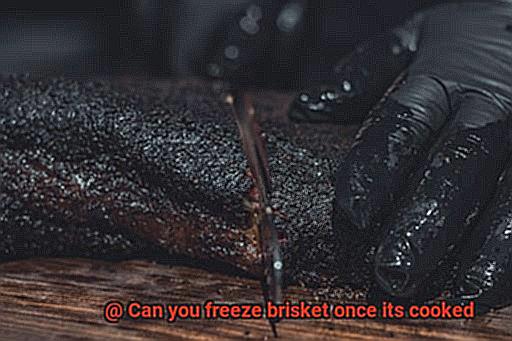
Don’t forget to label your package with the date of freezing. Trust me, you don’t want to be playing guessing games when it comes to the freshness of your brisket. Aim to consume it within three to four months for optimal taste and quality.
When storing multiple packages of brisket, arrange them in a single layer to allow better airflow and faster freezing. Once frozen, stack ’em up – just make sure nothing heavy is on top that could crush your precious meaty treasure.
Keep an eye on your freezer temperature too. It should be at or below 0°F (-18°C). Anything higher could have a negative impact on the quality of your frozen brisket, and we definitely don’t want that.
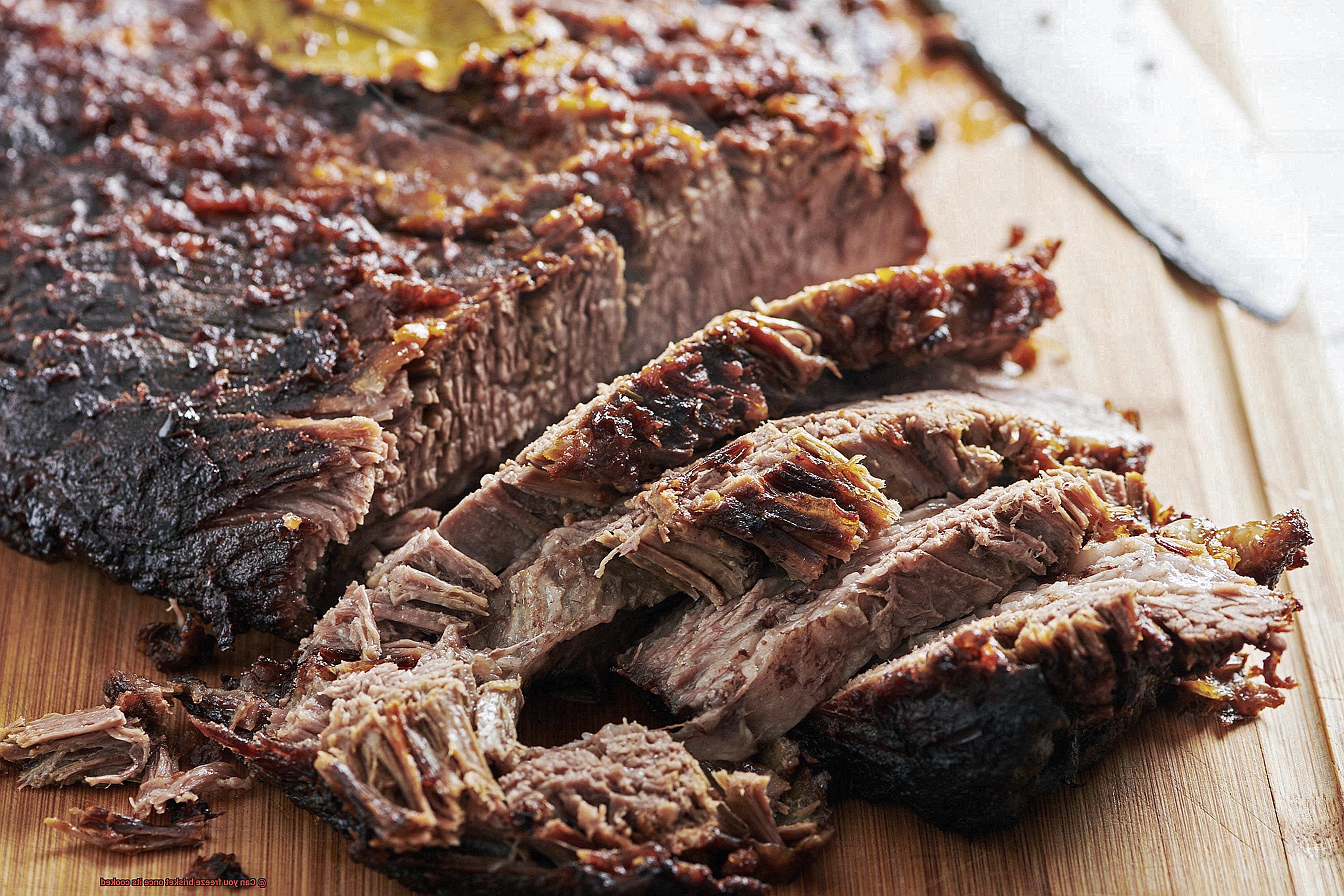
When it’s time to thaw that frozen treasure, transfer it from the freezer to the refrigerator. Slow thawing in the fridge not only helps maintain the meat’s texture but also minimizes any potential bacterial growth. Safety first, my friends.
Now, I know you’re itching to sink your teeth into that juicy brisket. Reheating it is a breeze – use the oven, stovetop, or microwave. Just make sure to heat it thoroughly to an internal temperature of 165°F (74°C) for ultimate deliciousness.
Remember, freezing cooked brisket is a fantastic way to preserve it, but keep in mind that the quality may slightly diminish compared to freshly cooked brisket. However, when stored and reheated correctly, that frozen beauty can still be a tasty treat worth savoring.
Thawing Frozen Cooked Brisket Safely and Gradually
Imagine the anticipation as you open your freezer and catch a glimpse of that mouthwatering cooked brisket you stashed away. It’s just waiting to be thawed and savored at your next grilling extravaganza. But how do you go about thawing it safely and gradually, without compromising its flavor and texture? Fear not, my fellow grill enthusiasts. In this comprehensive guide, we’ll walk you through the art of thawing frozen cooked brisket like a pro.
The Refrigerator Method: Slow and Steady Wins the Race
When it comes to thawing your brisket, the refrigerator is your ally. This method guarantees safe thawing while preserving the meat’s succulent flavor and tenderness. Planning ahead is crucial – allow enough time for full thawing in the refrigerator, which may take anywhere from 24 to 48 hours depending on the size of your brisket. Remember, patience is rewarded with perfection.
The Cold Water Method: A Lifesaver for Time-Pressed Grill Masters
For those moments when time is of the essence, fear not. The cold water method will come to your rescue. Simply place the frozen brisket in a leak-proof plastic bag and submerge it in cold water. Change the water every 30 minutes to maintain a safe temperature. Depending on the size of your brisket, this method typically takes about 2-3 hours, ensuring a timely grilling experience.
Avoid Room Temperature and Hot Water Methods:
Beware of quick fixes. Resist the temptation to use room temperature or hot water for thawing. These methods can lead to bacterial growth and compromise food safety. Stay vigilant and stick to the tried-and-true methods outlined above.
Proper Handling: Keep It Clean
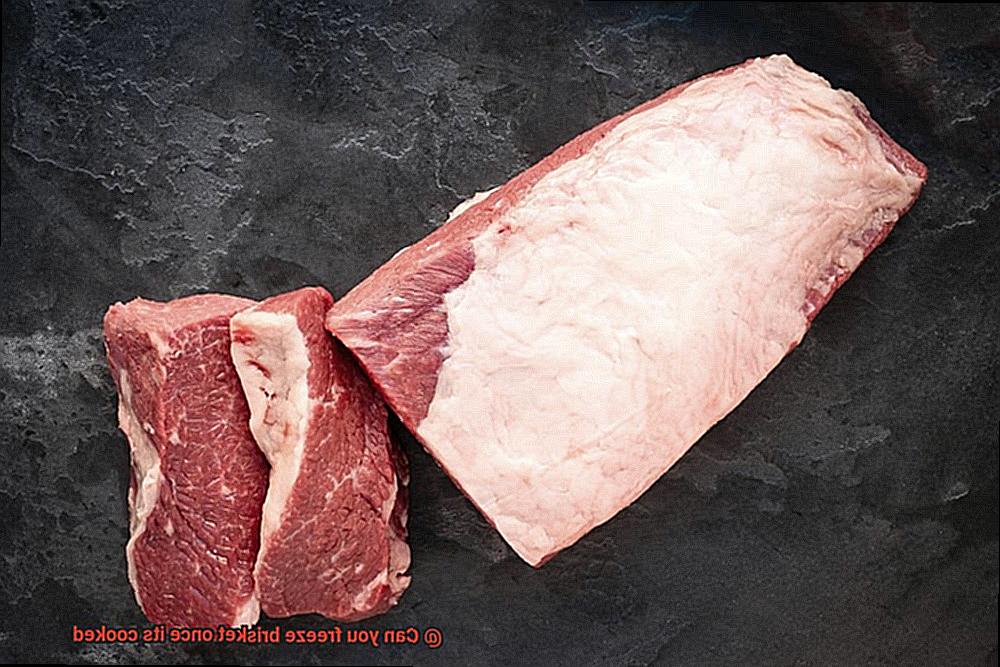
Before embarking on your thawing journey, prioritize cleanliness. Wash your hands thoroughly before and after handling the brisket. Be meticulous in cleaning all utensils, cutting boards, and surfaces that come into contact with the raw or thawed meat. Cross-contamination is a foe to be reckoned with, so handle with care.
Refreezing and Storage:
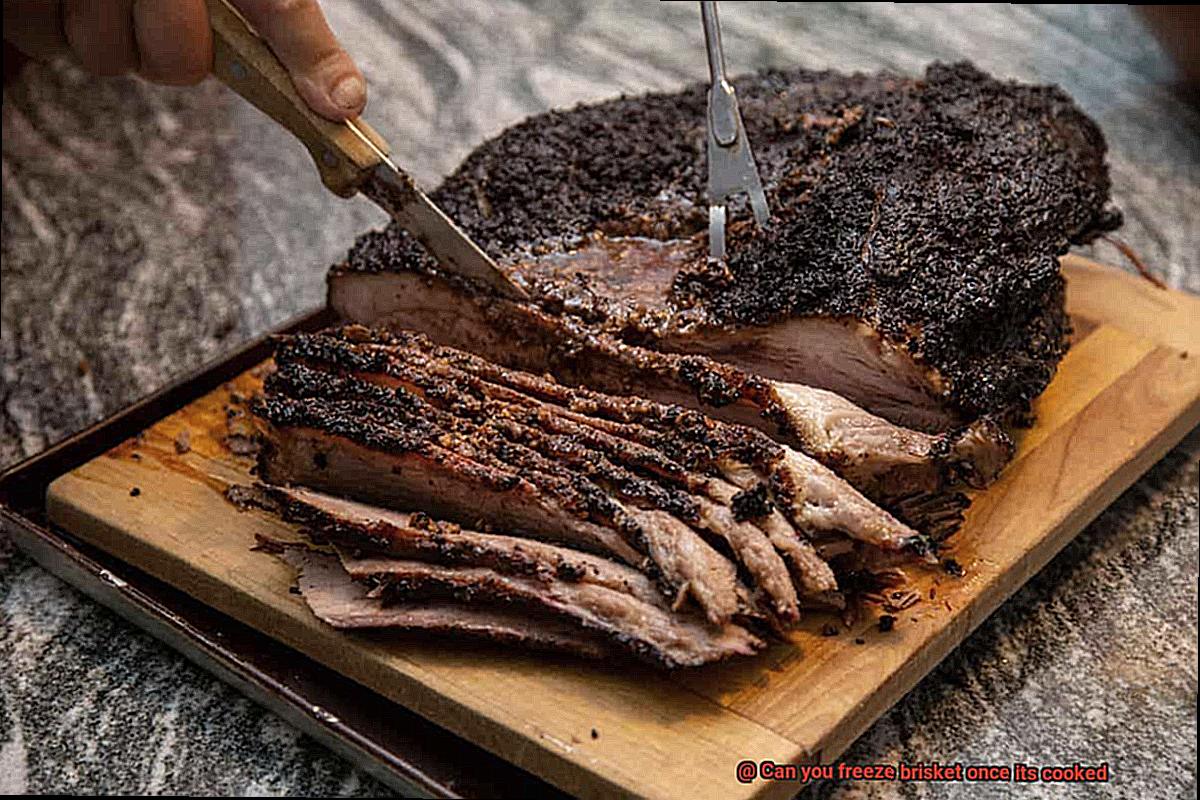
In case you only need a portion of the thawed brisket, fear not. You can safely refreeze the remaining portion as long as it has been handled properly during thawing. However, bear in mind that each freeze-thaw cycle may affect the texture and taste of the meat. It’s a trade-off worth considering.
Reheating Cooked, Frozen Brisket Without Drying it Out
You’ve got some leftover cooked brisket sitting in your freezer, and you’re wondering how to reheat it without drying it out. Well, you’re in luck. I’m here to share with you some expert tips on how to achieve that juicy, tender brisket goodness once again.
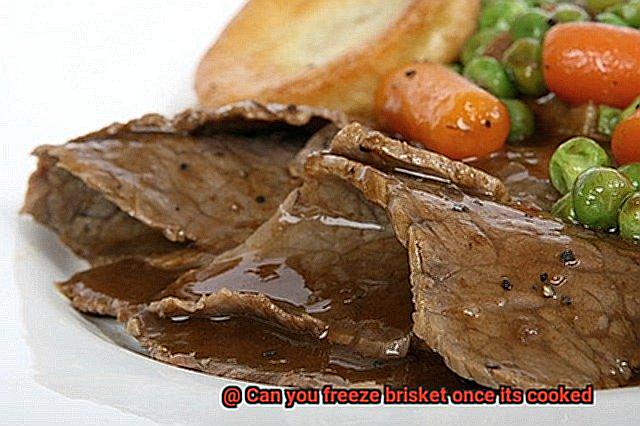
The key to reheating cooked, frozen brisket without drying it out is to use a method that retains moisture and prevents the meat from becoming tough and chewy. Here are two tried-and-true methods that will do just that:
Slow Cooker/Crockpot Method:
- Start by thawing the brisket in the refrigerator overnight. This gradual thawing process helps preserve the meat’s texture and moisture.
- Once thawed, place the brisket in the slow cooker and add a small amount of liquid, such as broth or barbecue sauce. This will help keep the meat moist during reheating.
- Set the slow cooker to low heat and let the brisket reheat slowly for several hours. Avoid rushing the process by using high heat, as this can dry out the meat.
- Periodically check on the brisket while it’s reheating to ensure it doesn’t overcook or become dry. If needed, add more liquid to maintain moisture.
- Once thoroughly reheated, remove the brisket from the slow cooker and let it rest for a few minutes before serving. This allows the juices to redistribute within the meat, resulting in a more flavorful and tender final product.
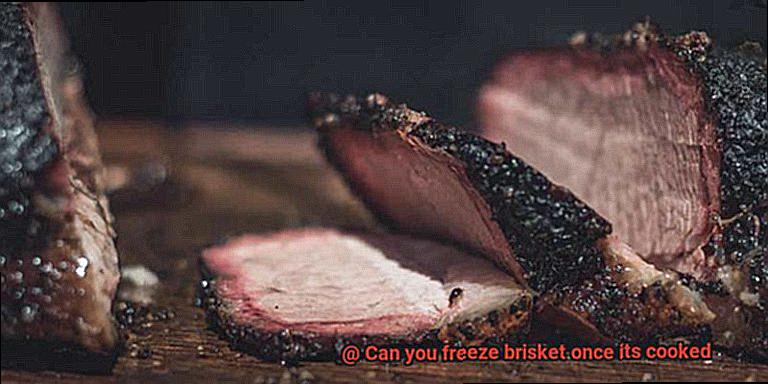
Oven Method:
- Preheat your oven to a low temperature, around 275°F (135°C).
- Thaw the brisket in the refrigerator overnight.
- Place the thawed brisket in a baking dish or roasting pan and cover tightly with aluminum foil. This traps moisture and prevents drying out.
- Put the dish in the preheated oven and let the brisket reheat slowly for about 1-2 hours, or until it reaches an internal temperature of at least 165°F (74°C).
- Like with the slow cooker method, periodically check on the brisket and add liquid if needed.
- Once reheated, remove the brisket from the oven and let it rest for a few minutes before serving.
Avoid using methods like microwaving or boiling, as these can further dry out the meat and compromise its texture. By using the slow cooker or oven methods, you can enjoy the convenience of reheating your cooked, frozen brisket without sacrificing its taste and tenderness.
E5fLZDkDqlc” >
Conclusion
Yes, you can absolutely freeze brisket once it’s cooked.
Freezing cooked brisket is a convenient way to preserve its deliciousness for future meals. By freezing it, you can ensure that your brisket stays fresh and flavorful until you’re ready to enjoy it again.
So, go ahead and freeze that mouthwatering masterpiece without any worries.

